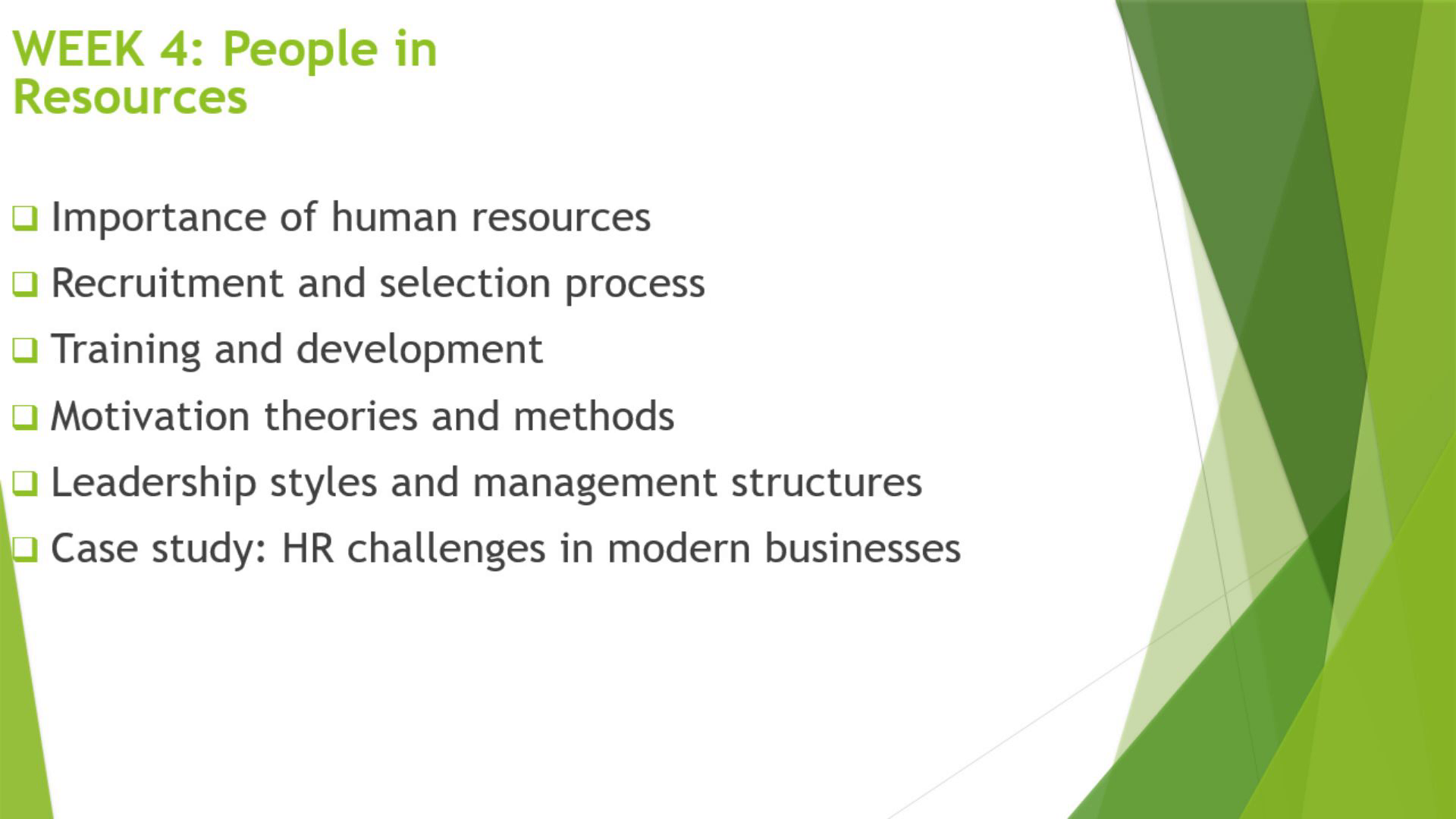
WEEK 4: People in Business: Human Resources
Scene 1 (0s)
WEEK 4: People in Business: Human Resources. Importance of human resources Recruitment and selection process Training and development Motivation theories and methods Leadership styles and management structures Case study: HR challenges in modern businesses.
Scene 2 (23s)
Human resources (HR) are critical for attracting and retaining talented employees who drive organizational success. HR manages recruitment, training, performance evaluation, motivation, and employee engagement. It ensures legal compliance with labor laws and resolves workplace conflicts. HR also shapes organizational culture and manages change to align employees with business goals.
Scene 3 (50s)
The process begins with job analysis and planning to identify staffing needs and define job roles. Recruitment involves advertising vacancies and attracting candidates internally and externally. Applications are received and screened to shortlist qualified candidates. Selection methods include interviews, tests, and reference checks. The best candidate is offered the job and onboarded through orientation and training.
Scene 4 (1m 18s)
Training enhances employees’ skills and prepares them for new technologies and processes. Development programs motivate employees by offering growth opportunities, improving performance and career prospects. Well-trained employees contribute to organizational competitiveness and adaptability.
Scene 5 (1m 38s)
Training enhances employees’ skills and prepares them for new technologies and processes. Development programs motivate employees by offering growth opportunities, improving performance and career prospects. Well-trained employees contribute to organizational competitiveness and adaptability.
Scene 6 (2m 7s)
Maslow’s Hierarchy of Needs suggests people are motivated by fulfilling basic to advanced needs, from physiological to self-actualization. Herzberg’s Two-Factor Theory distinguishes hygiene factors (salary, working conditions) that prevent dissatisfaction, from motivators (achievement, recognition) that drive satisfaction and performance.
Scene 7 (2m 30s)
Autocratic leaders make decisions unilaterally, useful in crises but may reduce morale. Democratic leaders involve employees in decisions, boosting engagement but potentially slowing processes. Laissez-faire leaders delegate authority, effective with experienced teams but risky without guidance. Transformational leaders inspire and motivate through vision and enthusiasm. Management structures vary from hierarchical (many layers) to flat (few layers), matrix (dual reporting), functional (departmental), and divisional (product or region-based).
Scene 8 (3m 8s)
Transactional Leadership Focuses on routine, supervision, and performance-related rewards or punishments. Management Structures Hierarchical (Tall) Structure Many levels of management with a clear chain of command. Suitable for large organizations but can slow communication. Flat Structure Few levels of management, promoting faster decision-making and closer communication between staff and managers. Matrix Structure Employees report to more than one manager (e.g., project manager and functional manager). Encourages collaboration but can cause confusion. Functional Structure Organization divided into departments based on functions (e.g., marketing, finance). Enhances specialization but may create silos. Divisional Structure Organization divided by product lines, markets, or geography. Allows focus on specific areas but can duplicate resources..
Scene 9 (4m 16s)
Challenges include attracting and retaining skilled talent amid competition, maintaining engagement especially with remote work, providing ongoing training to keep pace with technological change, fostering diversity and inclusion, and ensuring compliance with complex labor regulations.